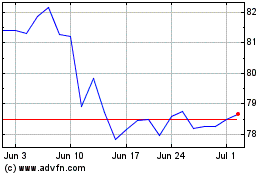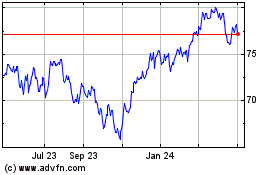Given the surging market but the shaky underlying fundamentals,
some are taking a different approach when it comes to investing
this time around. While long-term value investing is ever popular,
a few are looking to more technical approaches in order to play
this market. Chief among these techniques are ones that focus in on
charts, looking only at price movements instead of underlying
company fundamentals.
While the techniques are often putdown and dismissed by more
‘traditional’ analysts, some are able to use them very effectively
and profit of the chart patterns. Generally speaking chartists tend
to believe in three key principles, (relatively) efficient markets,
momentum, and repeatability. Basically, technical analysts often
believe that everything is already priced in for a company’s stock,
trends are hard to shake, and events are often cyclical; history
tends to repeat itself and many fail to learn from this (read Three
Technology ETFs Outperforming XLK).
The main problem with technical analysis, besides the assumption
of efficient markets, tends to be that investors can see whatever
they want to in many chart patterns. Changing the time period
involved can often greatly influence a signal while there are
literally dozens of different data points that investors can use,
none of which are foolproof. Additionally, investors should note
that there can be somewhat of a ‘self-fulfilling prophecy’ for
charting strategies; if enough people are implementing the
techniques they will certainly come true, although it will be
impossible to tell if the chartists themselves made the trends come
true.
Nevertheless, charting can be a powerful tool in an investor’s
arsenal and can often help many to see burgeoning trends more
clearly. Unfortunately, the techniques can be hard to learn and
take some practice in order to develop a reasonable system that
works. For those who are unwilling or unable to develop their own
technical analysis ideas, but like the strategies nonetheless, a
few funds from PowerShares could allow investors to broadly
implement some of the basic strategies in their portfolios (read
Does Your Portfolio Need A Hedge Fund ETF?).
Investors actually have three choices in the space, targeting
distinct markets. All three also use a variety of metrics in order
to implement their technical analysis strategies, focusing in on
relative strength characteristics, as constructed by index provider
Dorsey Wright. For those who are intrigued by this strategy, we
have highlighted some of the key points from the products
below:
DWA Technical Leaders Portfolio
(PDP)
For investors seeking to make a technical play on the U.S.
market, PDP is an excellent choice. The fund takes relative
strength characteristics into account—among other factors, in order
to select roughly 100 securities for inclusion in the fund. With
this focus, the product has amassed over half a billion in AUM
while charging investors 70 basis points a year in services. Top
individual holdings include Apple
(AAPL) so no big
surprises there, but after that Priceline.com
(PCLN), Silgan
Holdings (SLGN),
Liberty Media Corp
(LMCA), and
American Tower Corp
(AMT) round out the top
five (see Three Low Beta Sector ETFs).
Overall, the fund currently has a tilt towards consumer
discretionary firms (28.4%), although industrials (21.7%),
materials (11.4%) and technology (10.1%) make up double digit
weightings as well. Unfortunately, with the focus on some low
yielding sectors, the fund may not be a great destination for
income, paying out a paltry 0.4% in 30 Day SEC Yield terms.
However, the product has gained 2.2% over the past year compared to
a 1.4% gain for SPY in the same time period. This
suggests that even with the higher fees of PDP, the product has
outgained broad market cap weighted funds over some time periods,
although it has underperformed in recent months.
DWA Developed Market Technical Leaders Portfolio
(PIZ)
If investors are looking to make a broad play on developed
markets, across four continents, PIZ could be a quality pick. Much
like its U.S. focused counterpart, PIZ holds 100 securities and
focuses in on relative strength characteristics as the basis of its
research. However, investors should note that the product has seen
less in asset inflows and charges more, coming in at 80 basis
points a year in fees (read Five Cheaper ETFs You Probably
Overlooked).
In terms of top countries, the UK, Australia, and Canada, make
up the top three, while the product is heavily tilted towards large
cap stocks for its exposure. Sector holdings are pretty spread out
as five sectors make up at least 10% of assets. At the top,
industrials make up 20.5% of the fund while the two consumer
segments combine to make up about 29% as well. Unfortunately, the
product has managed to underperform its broad based counterpart,
losing about 15.6% over the past year compared to 11.9% for
EFA in the same time frame. Furthermore, many
shorter time frames are hardly friendlier to the ETF, suggesting
that it has struggled to make up for its higher expenses although
it does pay out a decent yield of 1.7% in the process.
DWA Emerging Markets Technical Leaders Portfolio
(PIE)
In order to play emerging markets with technical analysis, PIE
could offer investors quality levels of exposure. The product holds
about 100 securities in its basket focusing in on markets from
around the world including those in Asia, Europe, Latin America,
and Africa. The fund does charge a rather high 90 basis points a
year in fees but it does have almost $180 million in AUM,
suggesting reasonable bid ask spreads (see Three Overlooked
Emerging Market ETFs).
For country exposure, the fund has a definite focus on emerging
Asia, as four of the top five allocations come from that region of
the world. These top destinations are led by Malaysia at 19.1%,
South Korea at 16.4% and then Latin America’s top entrant with
Mexico at 15.5% of the fund. From a sector perspective,
industrials take the top spot at a little over one-fifth of the
assets while consumer sectors each have about 18.4% and materials
round out the top four with 11.3% of the total. Performance trends
in the emerging markets space, however, look to favor this fund
over its broad based counterparts like VWO or
EEM. Yet, with that being said, VWO has beaten out
PIE over shorter time periods, especially when taking into account
PIE’s relatively high fees.
Conclusion
Given that PowerShares has ETFs in each of the three distinct
markets, investors can begin to see some trends that have
developed. First, the broad technical strategy that PowerShares is
implementing seems to work better in light bear markets with
oscillating trends. This is evidenced by PDP beating SPY over the
long term but falling behind as of late as the U.S. market has
rallied. Additionally, the strategy seems to be doing poorly in
strong bear markets, like in the case of developed markets over the
past few months and years.
Obviously, these are all just generalizations and investors need
to take these conclusions with a grain of salt. There is no reason
why the trends outlined above will continue anymore than the trends
that technical analysts follow on a regular basis. However, with
that being said, the products could produce strong performances
when markets are not trending in one direction or another. That is
because these funds seem built to find trending securities in their
underlying benchmarks, possibly allowing them to outperform during
these uncertain times.
Want the latest recommendations from Zacks Investment Research?
Today, you can download 7 Best Stocks for the Next 30
Days. Click to get this free report >>
Author is long VWO.
To read this article on Zacks.com click here.
Zacks Investment Research
Want the latest recommendations from Zacks Investment Research?
Today, you can download 7 Best Stocks for the Next 30 Days. Click
to get this free report
iShares MSCI EAFE (AMEX:EFA)
Historical Stock Chart
From Mar 2024 to Apr 2024

iShares MSCI EAFE (AMEX:EFA)
Historical Stock Chart
From Apr 2023 to Apr 2024
